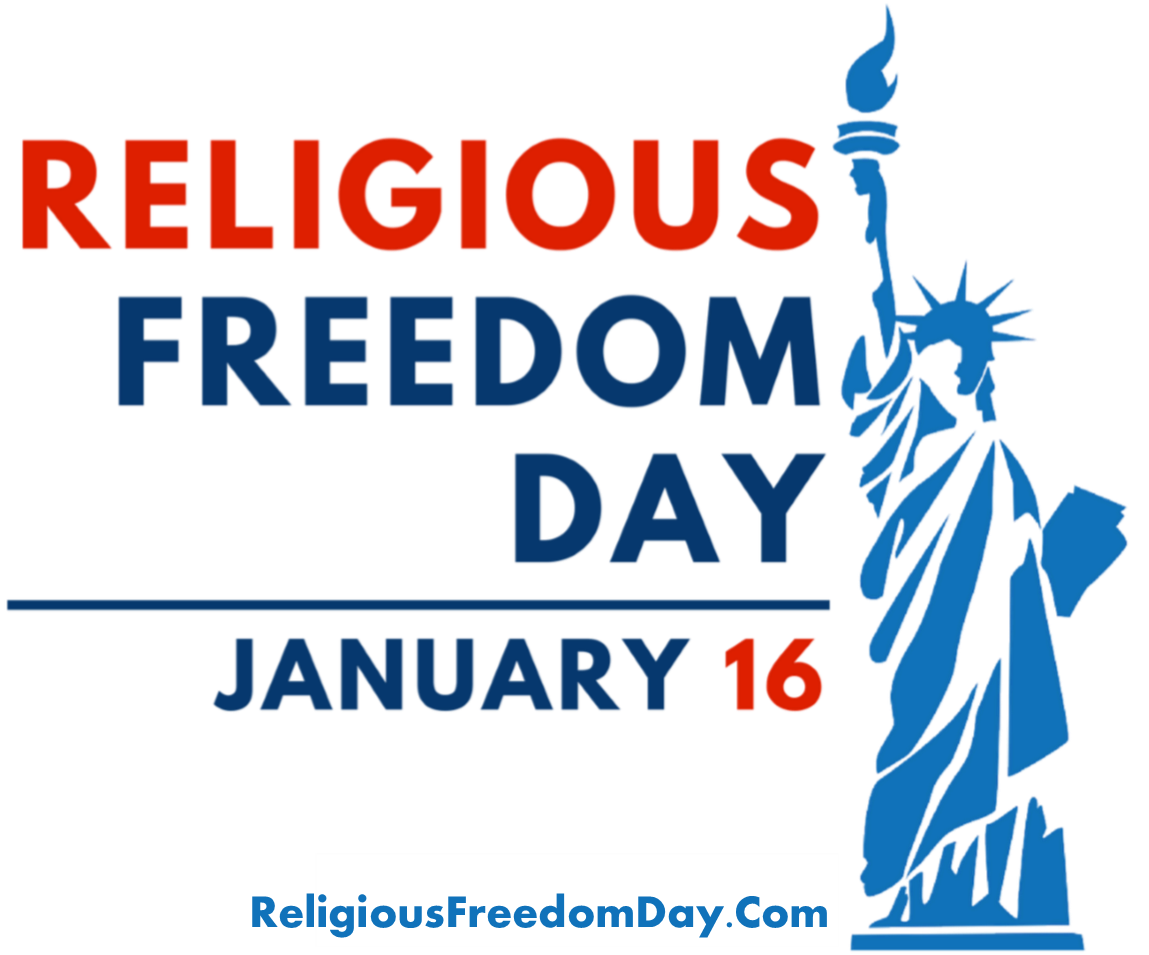Religious Freedom Day
Each year, the President declares January 16th to be “Religious Freedom Day,” and calls upon Americans to “observe this day through appropriate events and activities in homes, schools, and places of worship.” It is the anniversary of the passage, in 1786, of the Virginia Statute Virginia Statute on Religious Freedom. Thomas Jefferson drafted the legislation and considered it one of his greatest achievements. It stopped the practice of taxing people to pay for the support of the local clergy, and it protected the civil rights of people to express their religious beliefs without suffering discrimination. (Download our free Religious Freedom Day Guide.)
The men who drafted the U.S. Constitution leaned heavily on Jefferson’s statute in establishing the First Amendment’s guarantee of religious freedom.
Today, that protection is as important as ever. In too many instances, public school teachers tell students they cannot include their faith in their homework assignments or classroom discussions.
The U.S. Department of Education has issued guidelines explaining students’ religious liberties. Talking about religious liberties (especially explaining students' liberties to parents) will make an administrator’s job easier because it will clarify that schools need not be “religion free zones.” It is often the case that parents who complain to school officials about what they think are violations of the separation of church and state do not understand the appropriate and lawful place religious expression can have at school.
The Message of Religious Freedom Day
The main message students need to hear is that they shouldn't feel like they have to be “undercover” about their religion – that somehow, they have to keep quiet about their family's beliefs. School officials might be hesitant to acknowledge Religious Freedom Day thinking they will need to have a school assembly giving a platform to various religious speakers. This is not necessary. Religious Freedom Day is an opportunity for a civics lesson regarding Americans’ freedom to express and live out their faith.
Commemoration Ideas
In commemorating the day, a school could have an assembly or could ask teachers to recognize it in their classrooms. Either way, here are some ideas for acknowledging Religious Freedom Day at your school:
1. Read the Presidential Proclamation. You will find this at www.whitehouse.gov. At the White House Web site, enter a search for “Religious Freedom Day.” If this year’s proclamation is not posted in time for you to use it in class, consider using previous year’s proclamations. For links to previous proclamations go to www.ReligiousFreedomDay.com.
2. Have students write a paper on “What religious freedom means to me.”
3. Distribute to students copies of the U.S. Department of Education’s guidelines on students’ religious liberties. If you did nothing else to commemorate Religious Freedom Day, this alone would do more to promote real freedom at your school. You could also write a letter to parents and staple it to the guidelines. The letter can introduce Religious Freedom Day and convey, “Our school is a safe place for your child to express your family’s religious faith.” (Visit www.ReligiousFreedomDay.com for more information.)
4. Talk about countries where freedom of religion is not allowed. For research on this, visit http://www.uscirf.gov/
5. Distribute and discuss the Virginia Statute on Religious Freedom drafted by Thomas Jefferson. (January 16 is the anniversary of the passage of this statute). For a copy of the statute, and an easier-to-read paraphrase of this document, visit www.ReligiousFreedomDay.com.
Religious Liberties
Freedom of speech can take different forms. It includes what you say to other people as well as your freedom to speak to God in prayer; it includes what you write in school assignments or what you create in an art class; it includes the words you give to a friend either by speaking or in writing. The information below comes from the U.S. Department of Education’s document Guidance on Constitutionally Protected Prayer and Religious Expression in Public Elementary and Secondary Schools (Jan 2020)
Here is a summary of the U.S. Department of Education’s guidance:
Students
You can pray, read your Bible or other religious material, and talk about your faith at school.
You can organize prayer groups and religious clubs, and you can announce your meetings.
You can express your faith in your class work and homework.
You can wear clothing with religious messages.
You may be able to go off campus to have religious studies during school hours.
You can express your faith at a school event.
You can express your faith at your graduation ceremony.
You can pass out religious literature at school.
Educators
Educators and school employees can pray at school.
Educators can teach about religion in class.
Schools can accommodate religious instruction and prayer during school.
Accountability
In 2002, Congress amended the Elementary and Secondary Education Act to require that public schools certify they have no policy against students praying at school. That is a rather low bar. A school might not have an official policy against prayer, but in practice they might repress it.
As of January 2020, schools must report any complaints against them. Under DeVos’ leadership, the Department of Education has made clear that states must have a process for students, parents and teachers to report violations of their right to participate in protected religious expression. It requires each state to notify the Department of any complaint against schools alleging violations even if the state deems them to be without merit.
Related Links
Religious Freedom Day Guidebook
The National Free to Speak Campaign
Presidential Proclamations (ReligiousFreedomDay.com - scroll down on main page)



